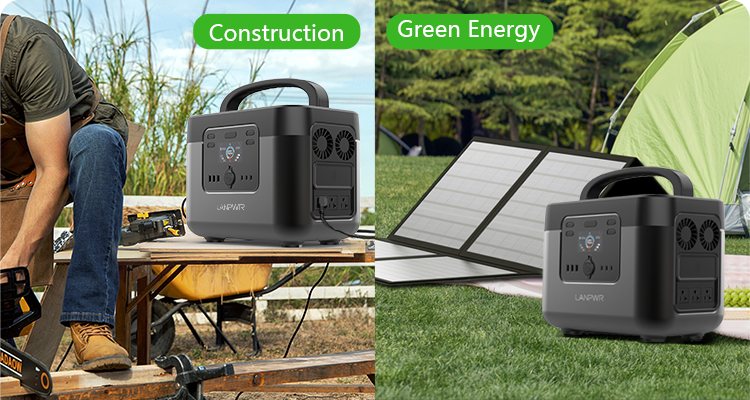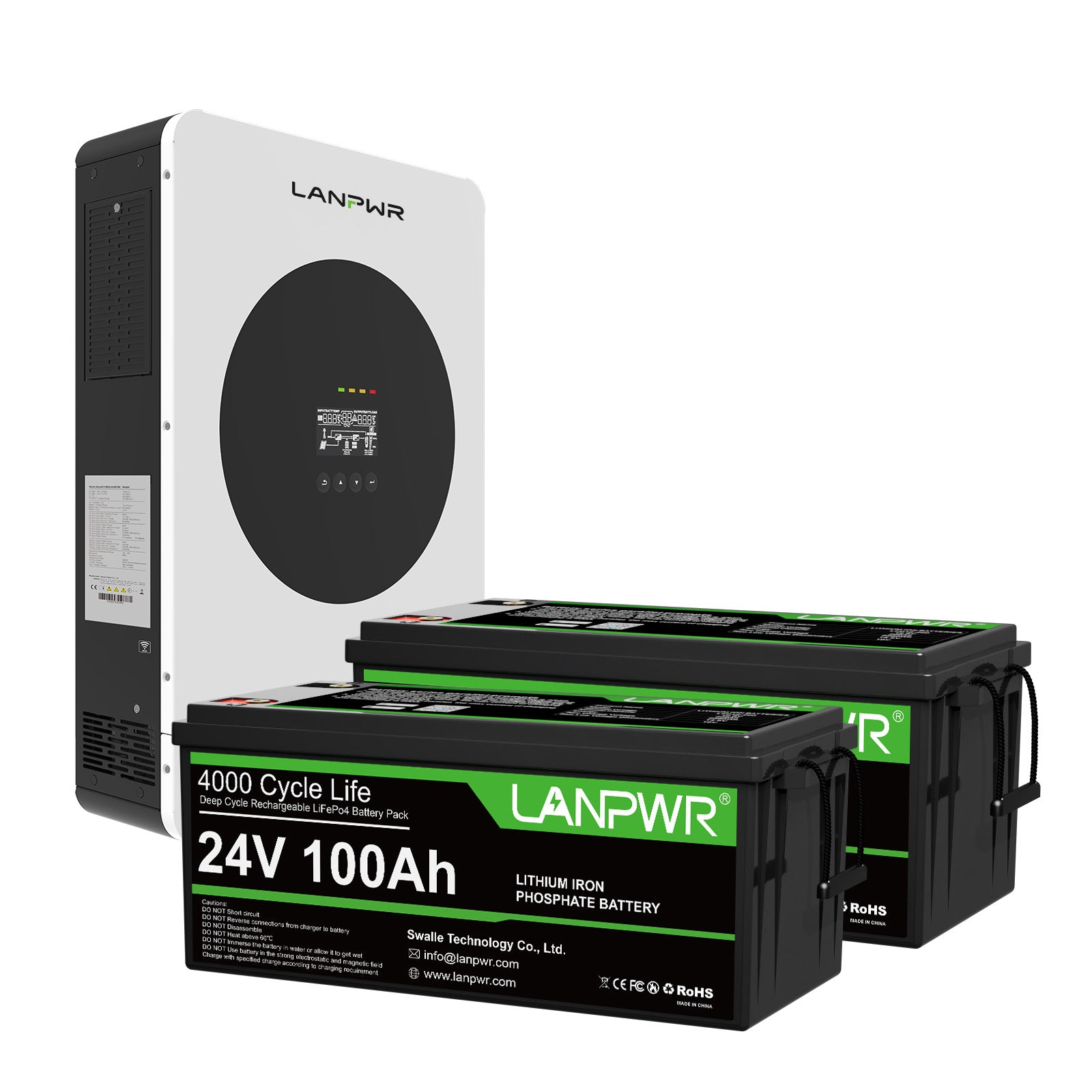Portable power stations have quickly become an invaluable power source for outdoor activities, emergencies, and daily use when a reliable electricity supply cannot be assured. They are configured as high-capacity batteries that provide electricity on demand with mobility in mind. Let us now look at their components before examining their benefits.
Components of a Portable Power Station
Portable power stations can be indispensable to outdoor recreational and emergency backup power solutions, providing users with power when needed. Understanding their components helps users appreciate what makes these versatile devices so effective - here is a breakdown of critical parts found within one:
- Battery
A portable power station's core component is its Battery. This energy storage component helps determine capacity, longevity, and lifespan. Most portable power stations utilize lithium-ion or lithium polymer batteries due to their high energy density, long lifespan, and reliability - these batteries are often measured in Watt-hours (Wh).
- Inverter
An inverter is an essential component that converts direct current (DC) stored in batteries into alternating current (AC), used by most household appliances and electronic devices. Its capacity, measured in watts, dictates how much power can be output at one time from your station—more powerful inverters may allow more devices at once and handle high-demand appliances like refrigerators or power tools more effectively.
- Charge Controller
A charge controller regulates the flow of electricity from any charging source (wall outlet, solar panel, or car charger) into a battery at its optimal rate and prevents overcharging to extend the Battery's lifespan. In addition, charge controllers help manage how power flows when discharging, protecting the Battery from being depleted too rapidly or deeply by preventing rapid drain.
- Output Ports
Portable power stations feature various output ports to meet different device and charging needs:
AC Outlets: These are used when powering standard home appliances and tools requiring alternating current.
USB Ports: Our range of USB-A and USB-C charging ports makes it easy to power smaller devices like smartphones, tablets, and cameras.
DC Outlets: DC outlets, such as 12V car charger ports, can provide the necessary power to devices designed to run off DC power sources.
- User Display and Interface
Portable power stations typically feature an LCD screen and user interface to give users complete control over their operation. The display generally provides key details like battery charge level, input/output wattage, remaining run time, and charge level. At the same time, buttons or touch controls offer convenient means of turning on/off, switching modes, or managing outputs.
- Cooling System
Portable power stations feature cooling systems designed to prevent overheating to optimize performance and ensure safety during operation. Such cooling solutions might include heat sinks, fans, or ventilation ports designed specifically to manage battery heat output and electronics heat production.
- Protective Circuitry Safety
This is of utmost importance with portable power stations; thus, they contain various protective circuits designed to mitigate electrical risks:
Overcharge Protection: Prevents overcharging by restricting charging beyond the capacity of the Battery.
Over-discharge Protection: Prevents batteries from discharging below an acceptable threshold to preserve their health.
Short Circuit Protection: This feature disconnects power in case a short circuit occurs and protects against device damage and fire hazards.
Temperature Control: This feature monitors and regulates charging/discharging as necessary to avoid overheating the battery pack.
How Portable Power Station Operates
Portable power stations are mobile, rechargeable battery systems that supply electrical energy on the go. Perfect for emergency power backup or energy provision during camping trips, these compact devices offer energy on demand when needed. Understanding their inner workings is vital to maximizing their capabilities; here is a breakdown of how these devices function:
Charging the Battery: Charging your portable power station's internal Battery should be the initial step when operating one, usually done through one of three means:
AC Adapter: One popular approach is using an AC adapter to charge the power station from any standard wall outlet. This allows the power station's batteries to charge to capacity within several hours, depending on their size. This process ensures maximum convenience!
Solar Panels: Portable power stations often come equipped with solar panel charging capabilities for outdoor activities that don't have access to wall outlets. Solar charging can be both environmentally friendly and cost-effective over time; its speed depends on weather conditions and the efficiency of the solar panels used.
Car Charger: Select models can also be charged using a 12V car charger, providing convenient ways of topping off power stations while driving.
Power Conversion and Distribution Systems
Once charged, portable power stations provide electricity to various devices via distributed charging. Here's how it works:
Convert DC to AC Power: Since batteries store power as DC (direct current) while many appliances and electronics require AC (alternating current), power stations use inverters to convert this DC energy from batteries into usable AC power. Their quality determines how much can be converted at once and its efficiency during conversion.
Power Output Management: Each power station system regulates its electricity output to various ports. It ensures each connected device receives precisely how much power it requires, helping avoid overloading its capacity. This prevents overloading.
Utilizing Output Ports: Users may connect devices directly to the power station by making use of any of its output ports:
AC outlets are available for larger devices such as laptops, small refrigerators, and lamps.
USB ports in both A and C versions offer users convenient solutions for charging phones, tablets, and other small electronics.
DC outputs provide power for devices that run off DC power sources, such as car chargers and certain portable appliances.
Monitoring and Safety Features.
Portable power stations come equipped with various monitoring and safety features for safe operation:
Display Screens: Most power stations feature LCD or LED displays that provide essential system status information such as battery charge level, input/output wattage levels, and estimated run times.
Protective Measures: Built-in safeguards offer protection from potential risks:
Overcharge Protection: Prevents overcharging by restricting Battery charging beyond its capacity, thus prolonging battery lifespan.
Over-discharge Protection: Prevents battery discharge to levels that could damage its integrity.
Temperature Control: The Temperature Control feature in iOS 9 monitors device temperatures and adjusts charging and discharging rates to prevent overheating of devices.
Auto-Shutoff: Many power stations include an automated shutoff feature that switches off power output if no device has drawn electricity for an extended period, saving battery life while conserving energy consumption.
Considerations When Selecting Portable Power Station
Portable power stations provide an effective and flexible means of managing energy needs in many different scenarios, from outdoor activities to emergency backup. Their portability, user-friendliness, and eco-friendliness make them highly advantageous - here are just a few benefits associated with portable power stations:
- Convenience and Portability
Portable power stations are purposefully constructed to be lightweight and compact for easy portability. This makes them suitable for outdoor activities like camping, hiking, and tailgating where traditional power sources are unavailable. Their portability also makes them great for traveling across remote regions where traditional sources may not reach. Portable power stations can fit easily in car trunks or RVs or be carried directly.
- Dependability during Emergencies
Portable power stations can be an invaluable asset in times of emergency, such as power outages from storms and other natural disasters, when power supplies fail, and essential devices such as lights, smartphones, and medical equipment cannot operate without power. They serve an especially vital function during situations where communication or medical device upkeep is vitally important to safety or health considerations.
- Eco-Friendly Energy Solution
Portable power stations operate without combustion engines, meaning no fumes or noise are produced during operation. This makes them the perfect option for use both indoors and outdoors. Furthermore, combined with renewable sources like solar panels, they offer an eco-friendly energy solution.
- Versatility Portable power stations feature multiple output ports
It has USB, AC, and DC outlets to charge various electronic devices simultaneously. Their versatility makes portable power stations worthwhile in emergency or recreational settings, construction sites, or outdoor work events where multiple electronic devices may need powering up simultaneously.
- Ease of Use
Operating a portable power station requires minimal technical skills or a complex setup. They feature user-friendly interfaces with clear indicators for battery life and output usage, allowing anyone to manage and track their electricity use easily.
- Cost-Efficient
Although an initial investment may be higher than other backup power options, portable power stations prove far more cost-efficient in the long run. Their minimal maintenance requirements compared to gasoline generators and no ongoing fuel expenses make them highly cost-effective, providing a significant return on investment! Furthermore, their durability ensures they continue working over the years—delivering maximum value from each investment!
- Safe to Use
Portable power stations tend to be safer than gasoline generators because they do not involve highly flammable fuels. They eliminate any risk of fires or fuel spills and offer quiet operation that produces no emissions, making them suitable for use even in tight spaces or dense populations.
Final Word
Portable power stations provide an innovative answer to our increasing reliance on mobile energy solutions in today's increasingly digital society. From outdoor excursions and professional uses to emergency backup, these eco-friendly devices make supplying power essential devices simple, safe, and connected.














Leave a comment
This site is protected by hCaptcha and the hCaptcha Privacy Policy and Terms of Service apply.